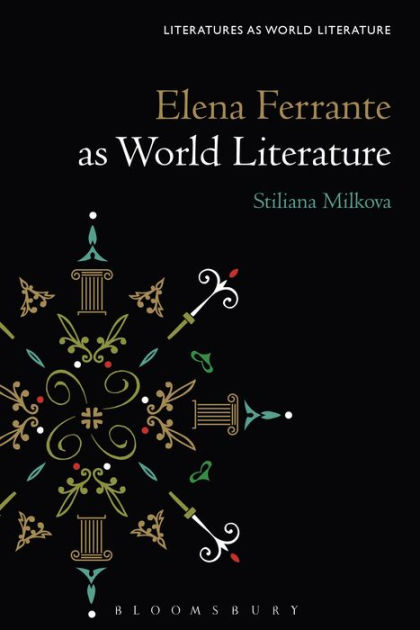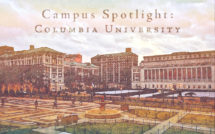

It is very fitting that Stiliana Milkova opens Elena Ferrante as World Literature, a monograph that deftly chronicles and examines the poetics and influences of the eponymous Italian sensation, with a tribute to her mother. For anyone who has even a fleeting familiarity with Ferrante’s fiction, the symbolism of such an introduction would need no explication. From Delia’s journey into the pits of Naples in search for her lost mother in Troubling Love to Lenù abandoning her two daughters to pursue an affair with a childhood crush in the fourth volume of the Neapolitan Novels, Ferrante’s literary imagination is fueled by fraught mother-daughter relationships. And there are hints of that same Ferrantian turmoil seething under Milkova’s description of her relationship to her own mother, not least in the way this latter disputes her daughter’s interpretation of Ferrante. And yet, in a turn of events that is in itself reminiscent of the impetus behind the creation of My Brilliant Friend, it was her mother’s challenge that inspired Elena Ferrante as World Literature, a book that is “the product of the creative and intellectual exchange with my own mother,” according to Milkova.
In addition to her popular appeal, Ferrante’s work provides many avenues for research and analysis, as evidenced by the significant amount of scholarship published on her writing in the last five years alone. From a collection of critical essays edited by Grace Russo Bullaro and Stephanie Love in 2016 as The Works of Elena Ferrante: Reconfiguring the Marginsto Tiziana de Rogatis’s Italian monograph Elena Ferrante’s Key Words (translated into English by Will Schutt in 2020) to the experiment in collective criticism of The Ferrante Letters, saying that a proper subfield of Ferrante Studies is emerging would not be an exaggeration. But Elena Ferrante as World Literature is no mere overview of the scholarship to date; it is an original and engrossing analysis of Ferrante’s oeuvre, viewing it as a self-contained literary project that explores the fragmentation and reconstruction of women’s identities in a patriarchal world. Throughout Elena Ferrante as World Literature, Milkova charters methodically how Ferrante articulates an “embodied female subjectivity” that almost always begins with the disintegration of the protagonist’s identity following years of patriarchal violence in its many forms. Milkova then illustrates how Ferrante offers a path outside “the dark prison-caves of patriarchal culture” as her women forge new identities using art, mutual surveillance, and the restorative and creative potential of female-centric relationships, especially those between mothers and daughters.
More broadly, Elena Ferrante as World Literature seeks to expose “the prominent strands of intertextual influences [that] are interwoven in [Ferrante’s] texts—Freudian psychoanalysis, feminist philosophy, and modern literature.” This latter in particular allows Milkova to frame Ferrante’s work as World Literature, as she elucidates these global references in the book’s first three chapters. The book’s introduction addresses the global literary dynamics that have enabled Ferrante’s international success, not least the work of her English-language translator Ann Goldstein, which Ferrante acknowledges and praises. Later, Milkova remarks how the concept of frantumaglia—a Ferrante lexicographical invention that she uses to talk about the “jumble of fragments” that constitutes the female psyche—owes “to the widespread nineteenth-century medical discourses about female hysteria and puerperal insanity,” as does the conceptualization of the female body as porous and slippery. On the most obvious spectrum of influences, Milkova puts The Days of Abandonment in conversation with Charlotte Perkins Gilman’s The Yellow Wallpaper, noting the way the dissolution of the two protagonists’ psyches in both tales are externalized and mapped into their physical surroundings. In her third chapter, on the maternal body and the emergence of Ferrante’s maternal discourse, Milkova offers a rare in-depth analysis of Ferrante’s book for children, The Beach at Night, and finds its traumatic predecessors in Contessa Lara’s 1895’s The Doll’s Story and Dare Wright’s The Lonely Doll.
But despite its title, there is no denying that Milkova is primarily interested in the way Ferrante represents and plays with the theories of psychoanalytic feminism. More specifically, her book traces how the ideas of both Kristeva and Irigaray influence the deconstruction of the mother-daughter relationship in Ferrante’s fiction. As Milkova illustrates, Ferrante’s protagonists, who tend to be well-educated and independent women, have an uneasy relationship with their uncouth Neapolitan mothers. It’s an adversarial dynamic that festers during childhood, as the daughter begins to internalize her father’s gaze and realizes that to join the patriarchal order, she “must sever her relationship with the maternal body, rejecting it as unclean, as something that threatens the subject’s own boundaries,” in a process that follows Kristeva’s logic of abjection. Disgust over the mother’s “oozing body” is a distinctive element of the relationship Ferrante’s women have with their mothers, a constant reminder of the permeability of their own physical and mental boundaries.
Following the narrative strand presented by Ferrante, Milkova too focuses at first on the disintegration of the female psyche represented by the word frantumaglia, what Milkova calls “a feminine expression of internalized violence, of fragmentation and mutilation.” But frantumaglia and its symptom, smarginatura, convey not merely a dissolving of boundaries as perceived by Lila in My Brilliant Friend, where bodies are experienced as porous and leaking. The cacophony of frantumaglia forces modern, independent women to “plummet into the caves of the mothers where they succumb to a long-standing archaic violence and find death or destruction as the only possible outcomes.” In this case, to bear the fate of the primordial mother is to return to a mental space where there is no identity beyond feral instinct and violence. It is to roam the obscure labyrinth of your own fragmented psyche that echoes with the rage of suicidal female ancestors trapped by a patriarchal system.
In dissecting Ferrante’s maternal discourse, Milkova shows that there is a direct association between mothers, motherhood, and the primordial in Ferrante’s fiction, a juxtaposition between the emancipated woman of the present who is always at risk of becoming like her mother. So, the daughter’s disgust at her mother is also a fear of being assigned her mother’s destiny: an erasure of any sort of individuality and autonomy. But to stop there would have been, in a sense, to leave motherhood within the frames of a daughter-centric discourse that has permeated Italian women’s fiction. Rather, Milkova argues, Ferrante presents motherhood from both poles of the mother-daughter relationship, “dissecting the maternal body and granting it a mind and a voice, restoring to the mother her nuanced, un-simplified, non-idealized identity.” In fact, the restoration of the mother is part of the journey that helps the daughter reclaim her own identity throughout the narrative. Crucial to this aspect is Irigaray’s influence on Ferrante as pertains the former’s suggestion, in Milkova’s words, that “mothers and daughters create, share, and exchange objects as a way to acknowledge their femininity and maintain unity.”
Milkova dedicates an entire chapter to the power of female creativity, which allows women to escape the patriarchal cage and rebuild themselves on their own terms. But since “Ferrante’s texts narrate and perform the experience of frantumaglia,” thus moving back and forth both spatially and temporally, this topic is broached from the very introduction. There is, at one level the creation of a new mother in the daughter who escapes the fragmentation through self-surveillance and the employment of what Milkova calls “dual and specular creativity.” Milkova highlights how Ferrante’s women use sharp objects and the act of penetration, typically coded masculine, to keep themselves on the alert, precisely so they don’t fall victims of smarginatura. Interestingly enough, one of the first such surveillance-based collaborations available in Ferrante’s literary universe is Olga asking her daughter Ilaria to stab her if she sees her slipping into the recesses of her mind in The Days of Abandonment.
If the mothers of the past used repressive surveillance to keep themselves in check according to men’s terms, so as not to step out of the constricted patriarchal frame and risk further violence, Ferrante’s protagonist repurpose self-surveillance precisely so as not to fall into the ragefully maternal cave that erases any self of identity. But conscious self-surveillance is not simply a matter of stabbing yourself with a paper cutter or needle, it is also employing “an autonomous female vigilance that eschews the patriarchal gaze,” and using “writing as an incisive tool for self-analysis and affirmative surveillance.” In fact, if frantumaglia and smarginatura are the processes through which women fall apart, creative surveillance is how they bring themselves back together, by being alert of the way the world around them wants to break them, and by using the fragments of their breakdown to then give a narrative sense to their experiences, re-writing their own histories and with it, recreating new autonomous selves.
Still, the tension between mother and daughter is not erased that easily, especially considering that mothers can in themselves be agents of violence. Milkova shows that Ferrante’s restorative project is not simply about becoming free of the primordial patriarchal cage that held mothers hostage, it is also about reclaiming one’s matriarchal lineage and building a female genealogy that honors one’s ancestors. In this framework, artistic creation can take many forms: it can be the collaborative force unleashed when Lila and Lenù break apart Lila’s wedding photography only to rebuild something more daring and uniquely theirs in Story of a New Name. Or it can be Delia removing the soiled, seductive red dress, mostly likely created by a male stylist, that fit her poorly to wear her seamstress mother’s self-styled blue suit in Ferrante’s first novel, Troubling Love. Indeed, many of Ferrante’s daughters rescue their mothers by incorporating them into their own bodies, instilling a creative and physical collaboration that is in itself an antithesis to the myth of the lone male genius. After all, the very concept of frantumaglia is a maternal creation.
The falling apart and reconstitution of the self in Ferrante’s fiction is mirrored in the spaces her women inhabit: In Troubling Love, Delia visits the underground cellar where she was sexually assaulted, in the Neapolitan Novels, Lila and Lenù begin their friendship by visiting another dark cave, and in The Days of Abandonment, Olga finds signs of male supremacy throughout the city of Turin with its male statues and pissing urinals. The final chapter in Elena Ferrante as World Literature is dedicated to the urban topographies of Naples and Turin, showing how the alienation of inhabiting a space created by men and for men worsens the fragmentation of the female psyche. Here too, however, Ferrante’s protagonists learn how to make cities their own: in Olga’s case by literally relieving herself in public to make the city as abject as it had made her. Given the way the discussion around women’s safety and agency has evolved in the past four years, it is interesting to see Milkova’s analysis of Ferrante’s literary project, both concerning the reclaiming of patriarchal cities where women are made to feel unsafe and erased, but also the larger framing of Ferrante’s women as needing to achieve subjectivity through degradation and fragmentation. As Milkova summarizes Ferrante’s ethos, “it is the fracturing of a woman’s identity when she questions her assigned roles, the shattering that breaks her apart when she dares to desire something for herself outside of the normative patriarchal cage,” that leads to her eventual emancipation.
It is a narrative that has certainly resonated with many of the women who read Ferrante. A certain belief, like Lila in My Brilliant Friend, that “femininity is associated with violated corporeality.” It reminded me of a recent tweet, following the murder of Sarah Everard in the UK by a policeman, where author Caroline O’Donoghue stated: “It’s not our gender that connects us. It’s our terror. Our terror, our anger, the fact that we’re still blamed for things we have no control over. How helpless we’re made to feel.” It’s most certainly the kind of understanding of womanhood that has dominated feminist discourse in the West since the late sixties and shaped the very feminist theorists that have inspired Ferrante. But while such analysis is not without its limitations, the persistent violence women face and the way such violence is baked into the physical and political infrastructures that dominate women’s lives down to the smallest gestures have encouraged a new wave of contemporary protests and conversations that center women’s experiences. And these acts are testament to the power of female collaboration, where speaking out is not only about breaking the silence, but about stitching together disparate narratives to make sense of the world in women’s own terms, or rather about dictating the terms of the narrative outside the patriarchal frame.
Indeed, what Milkova’s analysis in Ferrante as World Literature shows above all, is that the power of Ferrante’s narrative lies in her ability of not “rehashing the principles of psychoanalysis and feminist theory,” but using them “as narrative building blocks, as points of departure and exploration of the female body and psyche.” Likewise, Stiliana Milkova has written a compelling and highly readable study of Ferrante’s fiction that while informed by this latter’s influences, is interested more than anything about what the text itself reveals about Ferrante’s poetics and politics, explaining as a result, what makes Ferrante’s texts so addictive to read and such a pleasure to analyze. This one is for the academics and casual fans alike.
Barbara Halla is an Assistant Editor for Asymptote, where she has covered Albanian and French literature and the Booker International Prize. She works as a translator and independent researcher, focusing in particular on discovering and promoting the works of contemporary and classic Albanian women writers. Barbara holds a BA in History from Harvard and has lived in Cambridge, Paris, and Tirana.
Elena Ferrante as World Literature
By Stiliana Milkova
Publisher: Bloomsbury
Hardcover / 224 pages / 2021
ISBN 9781501357541
Published on May 11, 2021.




